学习中心
109 个结果
加载中...
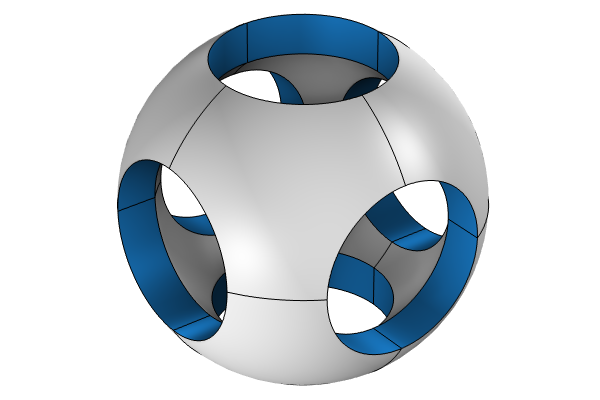
Building Geometry Using COMSOL Multiphysics®
Get an introduction to building geometry using COMSOL Multiphysics®.
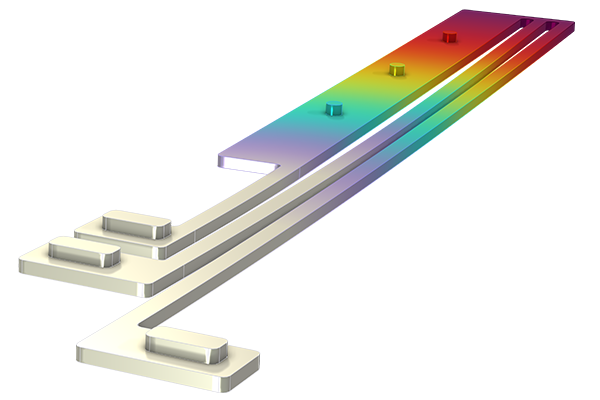
Defining Multiphysics Models
Learn about the different approaches for defining the physics for a multiphysics model.
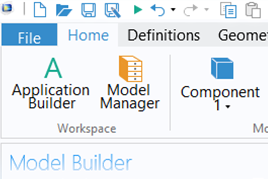
Getting Started with Building Simulation Apps
Get an introduction to the Application Builder and how to develop simulation apps of your models.
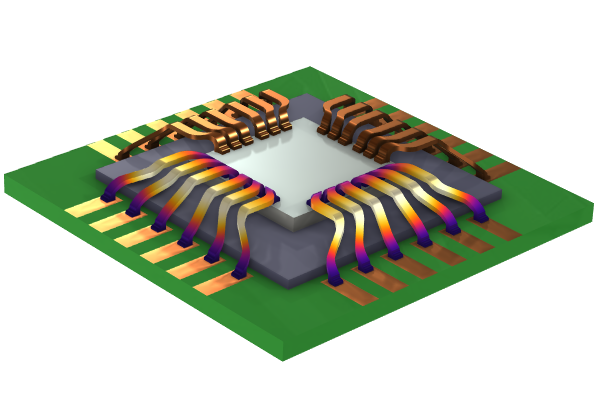
Getting Started with Electro-Thermal-Mechanical Modeling
Get an introduction to the software and learn how to model Joule heating and thermal expansion.

Getting Started with COMSOL Multiphysics®
Learn how to get started with COMSOL Multiphysics®through a series of self-guided tutorial videos and supplementary content.
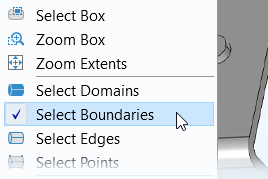
How to Navigate the COMSOL Multiphysics®User Interface
Learn how to use the user interface in COMSOL Multiphysics®in this 8-part, self-guided course.
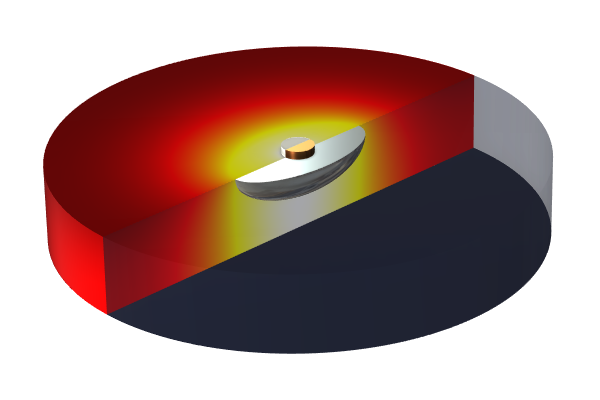
Introduction to Modeling Resistive and Capacitive Devices
Learn how to model resistive and capacitive devices.
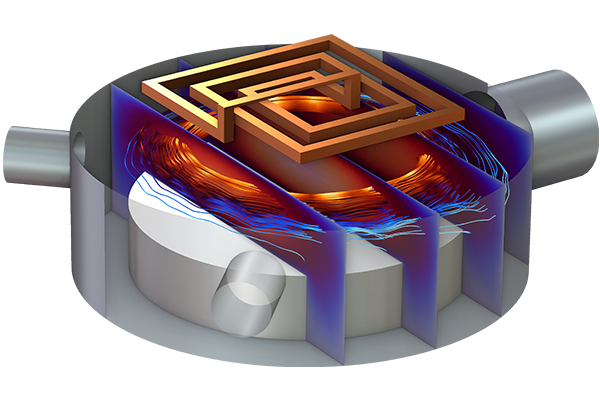
Introduction to Nonequilibrium Plasma Modeling
Learn how to model plasma systems.
Introduction to Semiconductor Modeling
Learn how to model semiconductor devices.
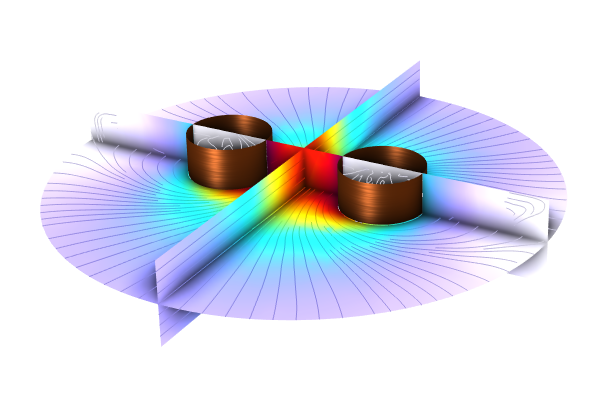
Modeling Electromagnetic Coils
Learn how to build models of electromagnetic coils.
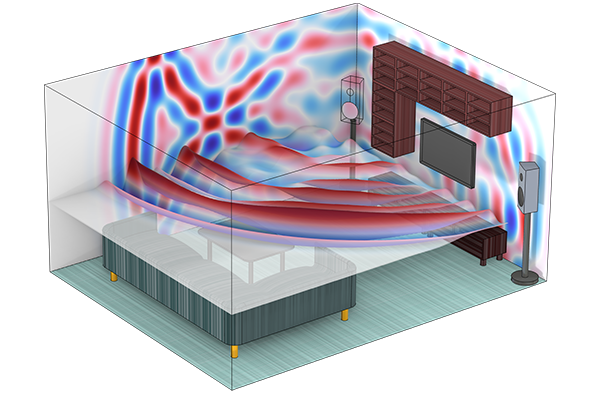
Modeling Pressure Acoustics
Learn the fundamentals of, and specialized physics features for, modeling pressure acoustics.
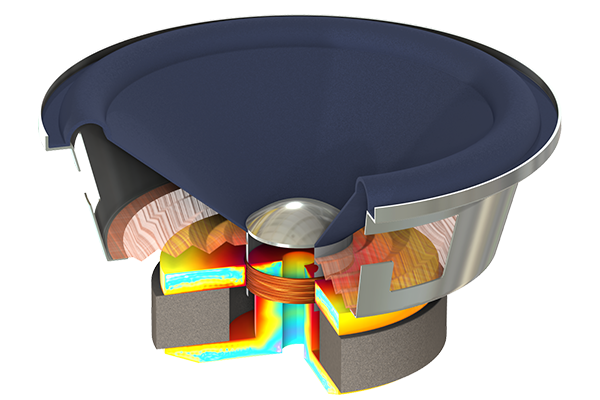
Modeling Speaker Drivers in COMSOL Multiphysics®
Learn about modeling speaker drivers.
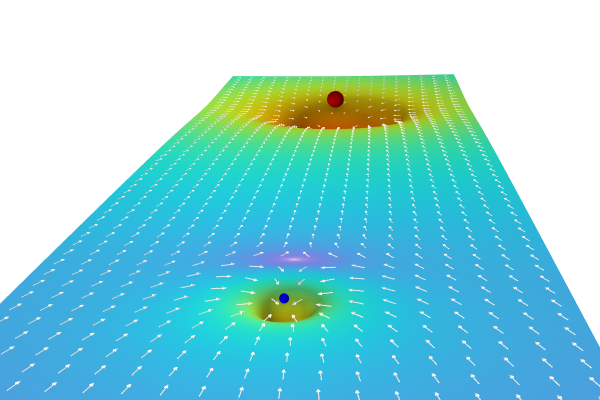
Modeling with Partial Differential Equations in COMSOL Multiphysics®
Learn how to model partial differential equations in COMSOL Multiphysics®.
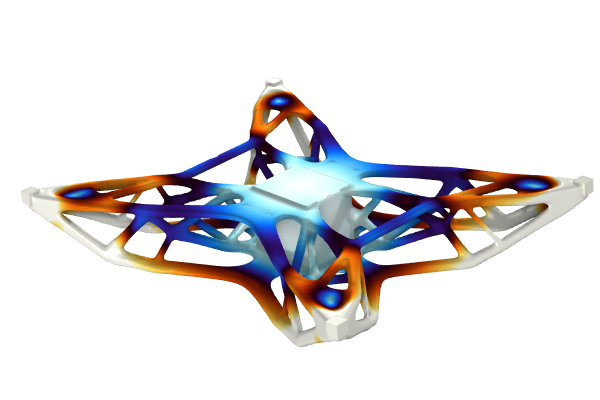
Performing Optimization in COMSOL Multiphysics®
Your guide to optimization in COMSOL Multiphysics®and the Optimization Module.
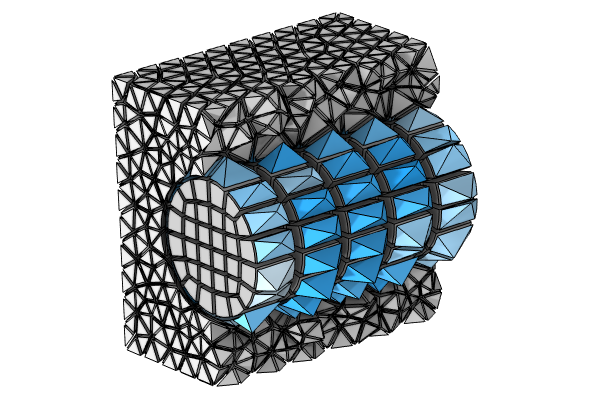
Using Swept Meshes for Model Geometries
Get an introduction to swept meshing and learn how to build a swept mesh.
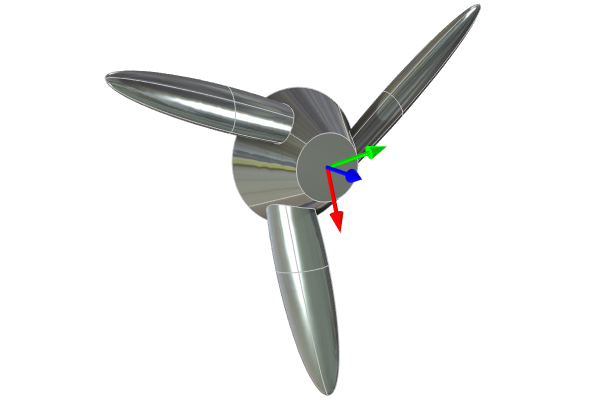
Applying Translations, Scaling, Reflection, and Rotation via the Deformed Geometry and Moving Mesh Interfaces
Learn how to apply translations, scaling, reflection, and rotation in COMSOL Multiphysics®.
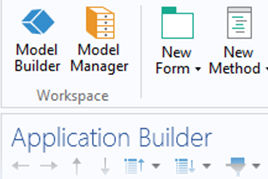
Basics of Building and Compiling Simulation Apps
Learn the basics of how to create a simulation app and compile it.
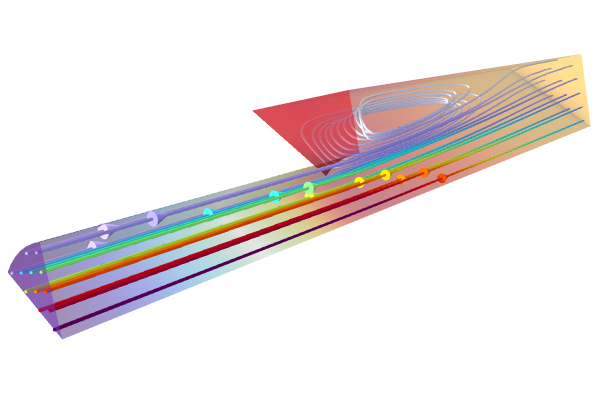
Basics of Modeling Laminar Flow in COMSOL Multiphysics®
Get an introduction to modeling laminar flow using COMSOL Multiphysics®.

Basics of Modeling Turbulent Flow in COMSOL Multiphysics®
Get a comprehensive introduction to turbulent flow modeling in COMSOL Multiphysics®.
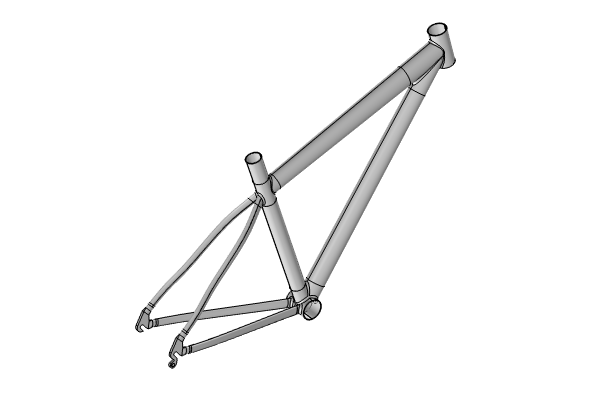
Building Simulation Applications with LiveLink™forSOLIDWORKS®
Get an introduction to building a COMSOL Multiphysics®simulation app using LiveLink™forSOLIDWORKS®.
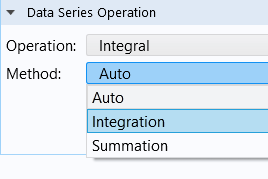
Computing Space and Time Integrals
Learn about computing integrals over space or time.
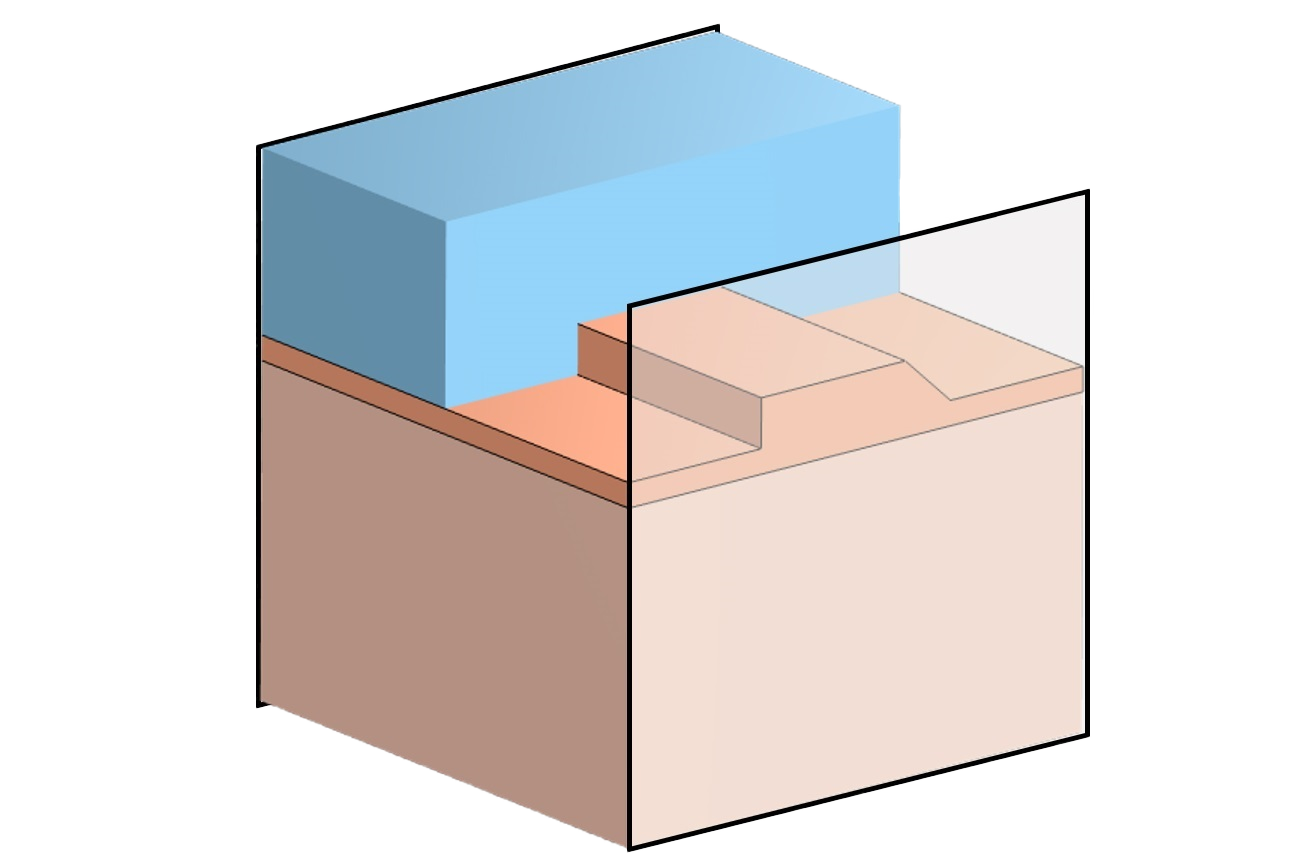
Copying and Reusing Boundary Mode Analysis Results
Learn how to copy and reuse boundary mode analysis results for models with multiple modes of interest.
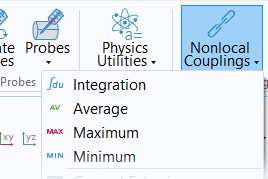
Coupling Physics Between Model Components for Multiphysics Models
Learn how to couple physics between model components to simulate multiphysics.
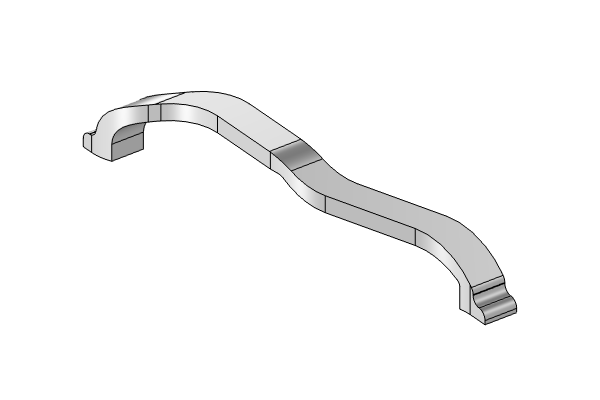
Electro-Thermal-Mechanical Workflow and CAD Import
Learn how to set up and compute the electric currents for an electro-thermo-mechanical problem.
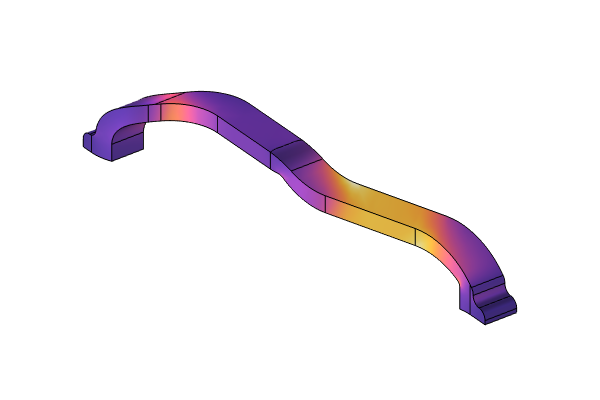
Evaluating Results and Introducing Nonlinearities in a Current-Driven Model
Learn how to evaluate results and define nonlinear material properties.
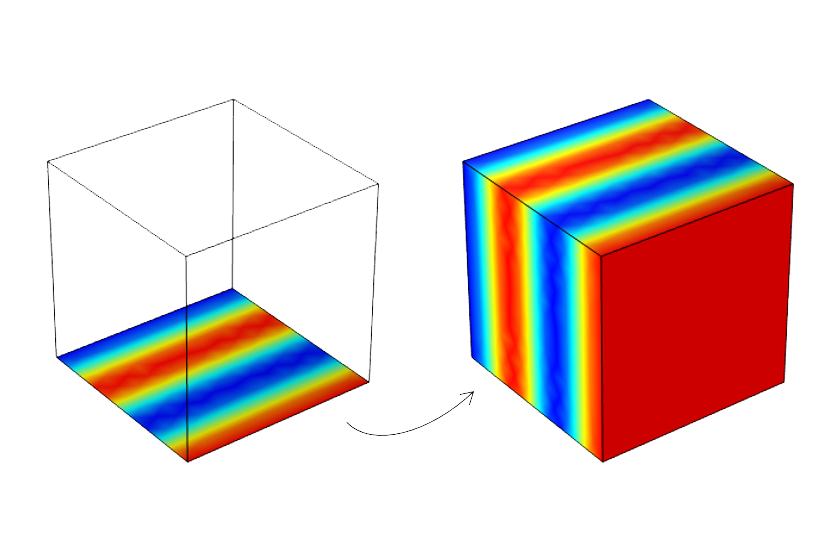
Examples of the General Extrusion Operator
Learn how to use the General Extrusion operator when modeling in COMSOL Multiphysics®.
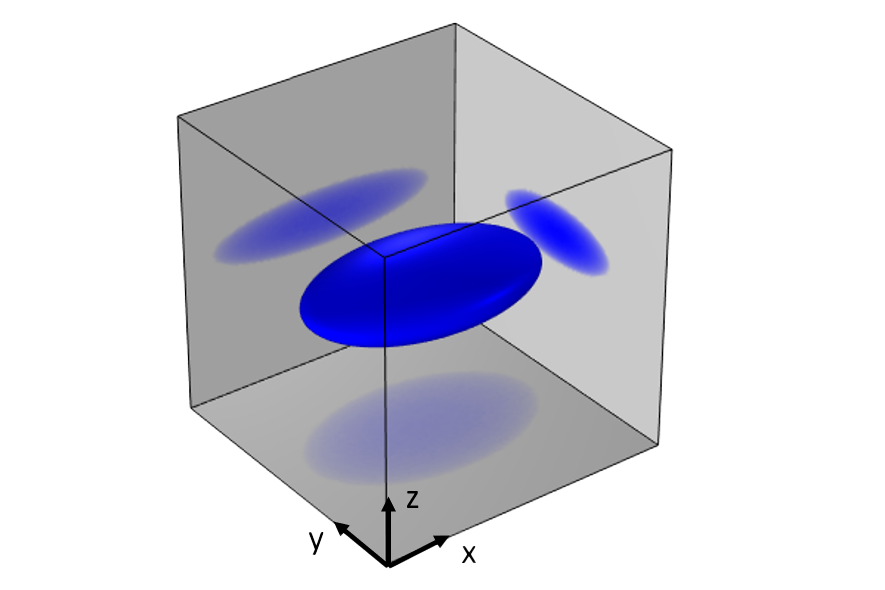
Examples of the General Projection Operator
See examples of using the General Projection operator in your multiphysics models.
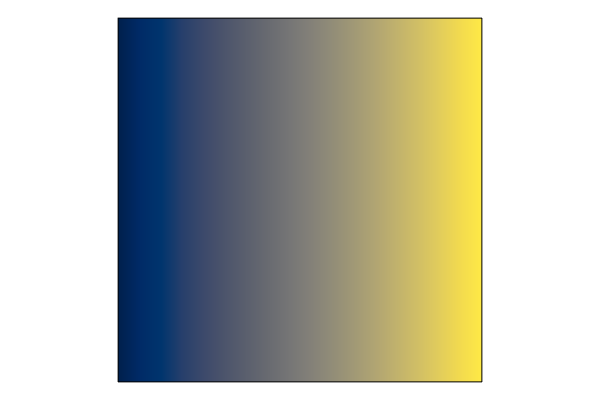
Examples of the withsol Operator
Learn how to use the withsol operator in COMSOL Multiphysics®.
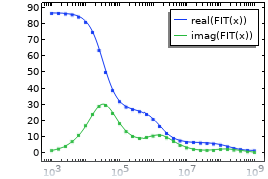
Fitting the Debye Dispersion Model to Experimental Data
Learn how to fit a Debye dispersion model to experimental data in COMSOL Multiphysics®.
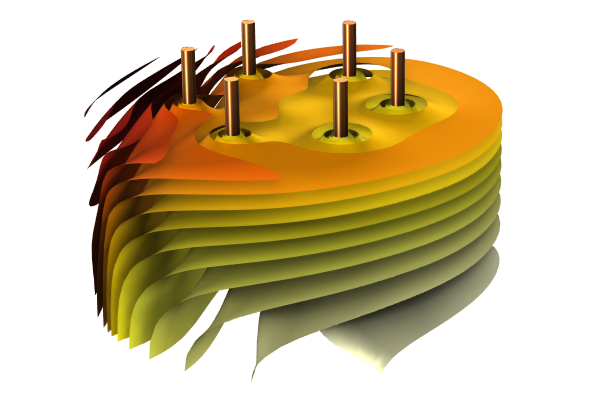
Fundamentals of Joule Heating in the Time Domain for Resistive and Capacitive Devices
Learn how to model Joule heating in the time domain for resistive and capacitive systems.
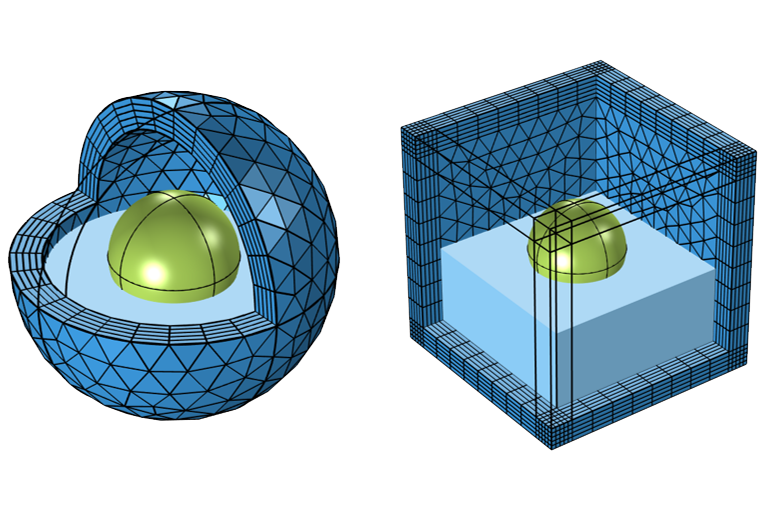
Geometry and Mesh Setup for Modeling Regions of Infinite Extent
Learn how to set up the geometry and mesh for models with infinite domains.
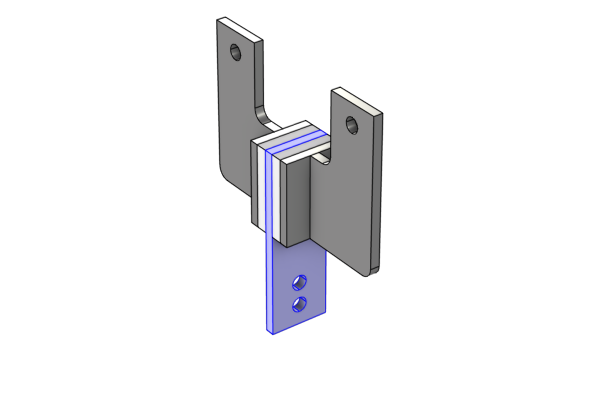
Geometry Concepts and Nomenclature in COMSOL Multiphysics®
Learn the terminology used for various geometries in COMSOL Multiphysics®.
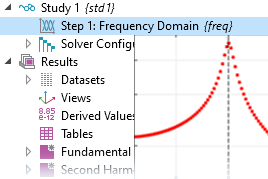
Handling Complex-Valued Numbers and Problems in the Frequency Domain
Learn about the formulation used when solving time-harmonic problems in the frequency domain.
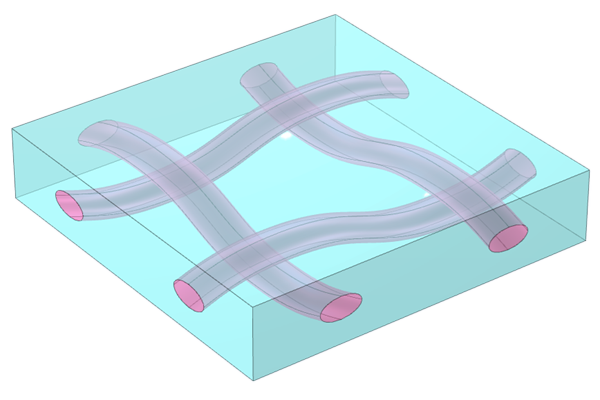
Homogenization of Material Properties
Get an in-depth look at how to perform homogenization of material properties with COMSOL®.
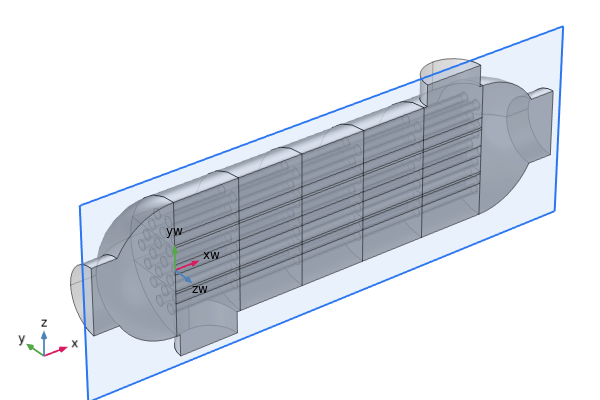
How to Create 2D Geometry from Cross Sections of 3D Designs
See the capabilities of COMSOL®for creating 2D cross-sectional geometries of 3D designs.
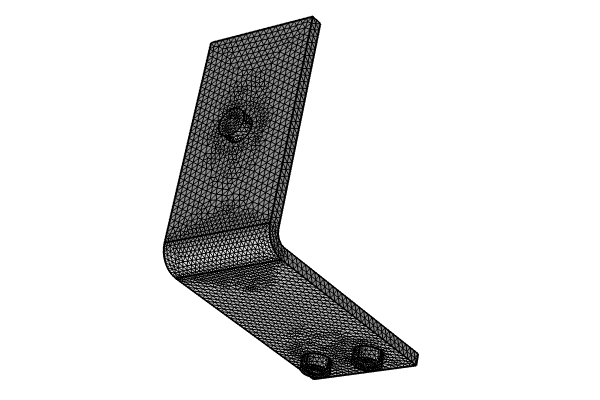
How to Estimate the Number of Degrees of Freedom in a Model
Learn how to estimate the number of degrees of freedom (DOFs) in a COMSOL Multiphysics® model.
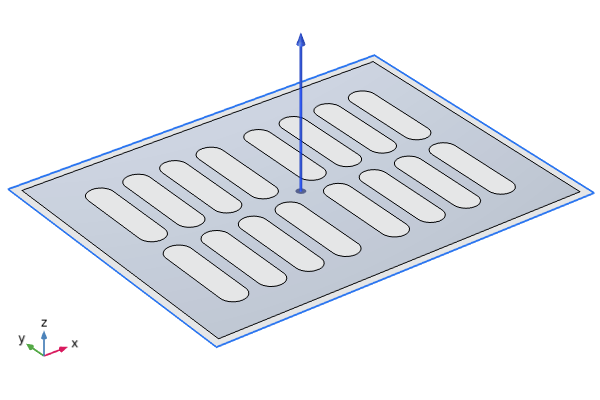
How to Expand 2D Designs to 3D Geometry
Learn how to expand 2D sketches to 3D in the COMSOL Multiphysics®software.
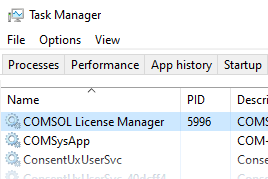
How to Install the COMSOL License Manager
This guide offers instructions for setting up the COMSOL License Manager for use with COMSOL Multiphysics®.
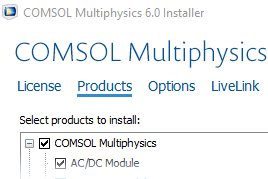
How to Install COMSOL Multiphysics®
This quick guide offers setup instructions for installing COMSOL Multiphysics®.
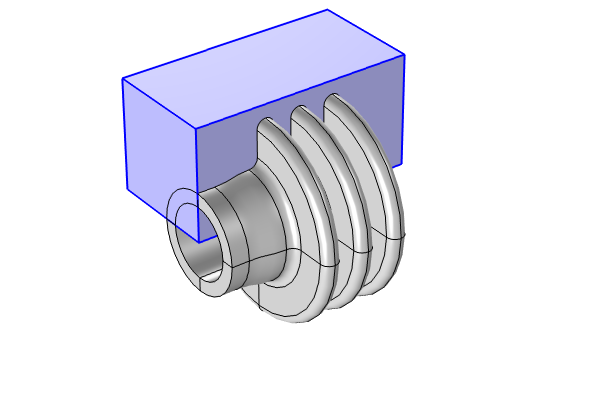
How to Partition and Split Geometry into Separate Parts
Learn how to partition geometries in COMSOL Multiphysics®and explore the benefits of doing so.

How to Perform a Distributed Parametric Sweep in COMSOL Multiphysics®
Learn how to avoid limited speedup on a cluster with simultaneous tasks.
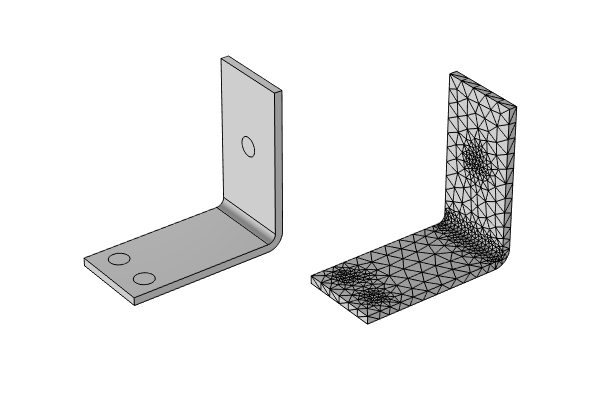
How to Reduce the Size of Your Model File
Learn how to reduce the size of your COMSOL Multiphysics®model file.
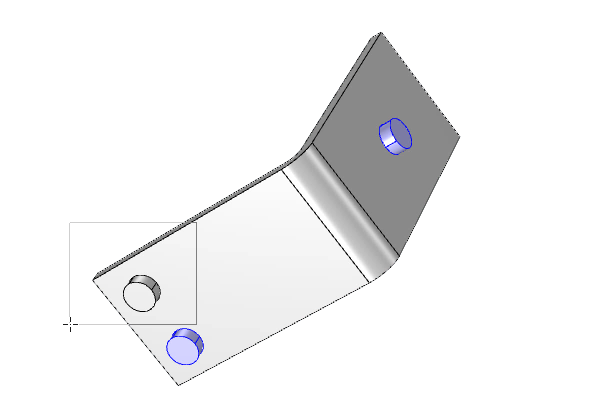
How to Select Geometry
Learn how to select geometry in your COMSOL Multiphysics®model.
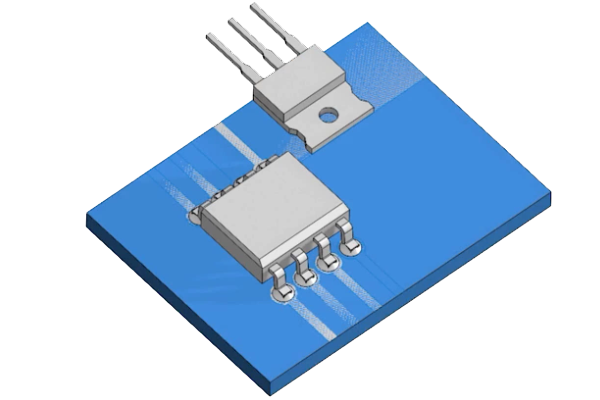
How to Synchronize Geometry Selections from SOLIDWORKS®to COMSOL Multiphysics®
Get an overview of how to use LiveLink™forSOLIDWORKS®to transfer materials from SOLIDWORKS®to COMSOL®.
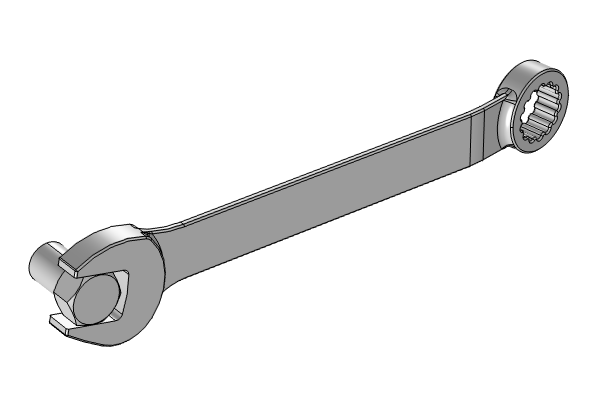
How to Synchronize Parameters Between SOLIDWORKS®and COMSOL Multiphysics®
See a demonstration of how to synchronize parameters between SOLIDWORKS®and COMSOL Multiphysics®.
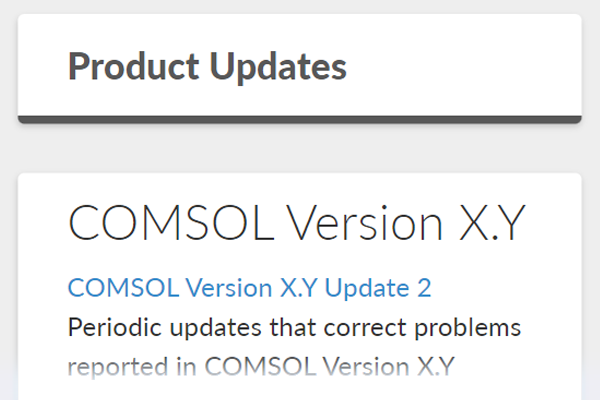
How to Update Your Current Version of COMSOL Multiphysics®
Learn how to update your current version of the COMSOL Multiphysics®software.
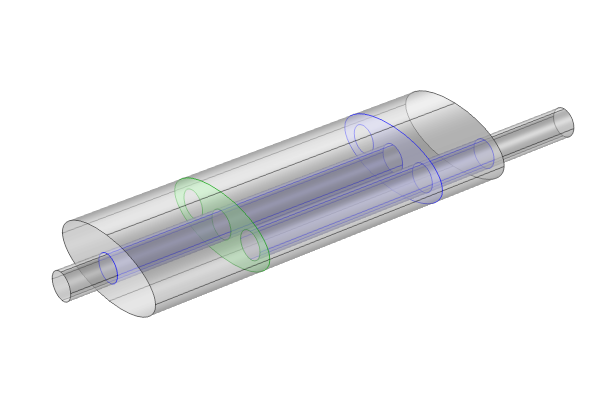
Identifying and Selecting Geometric Entities by Index Number
Learn how to identify and select geometric entities for your model by index number.

Importing Topological Data, Meshes, and Images
Learn about importing topological data, meshes, and images in COMSOL Multiphysics®.
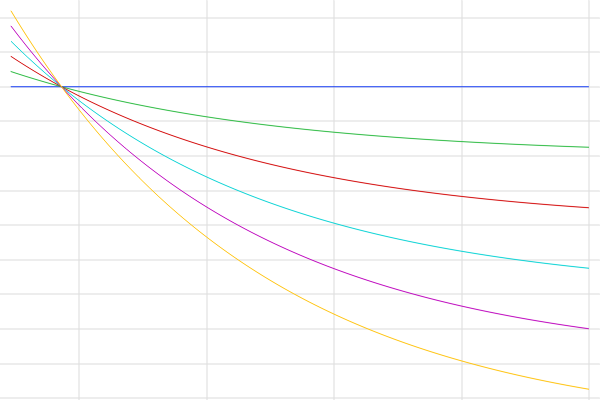
Improving Convergence of Nonlinear Stationary Models
Learn how to improve convergence when solving a nonlinear stationary model in COMSOL Multiphysics®.
Improving Convergence of Semiconductor Models
Your guide to different techniques for improving convergence when computing semiconductor models.
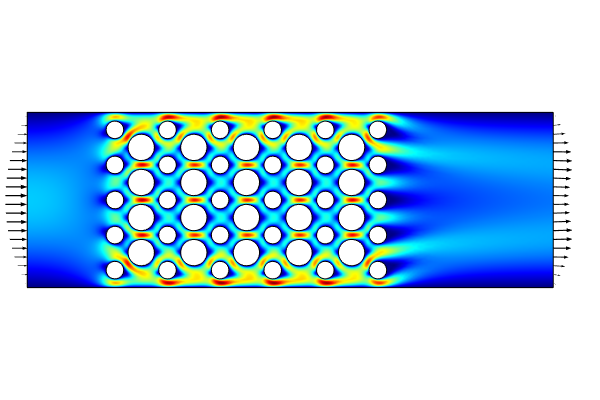
Integrating Along Streamlines and Extracting Particle Statistics
Learn how to integrate along streamlines and extract particle statistics for your fluid flow models.
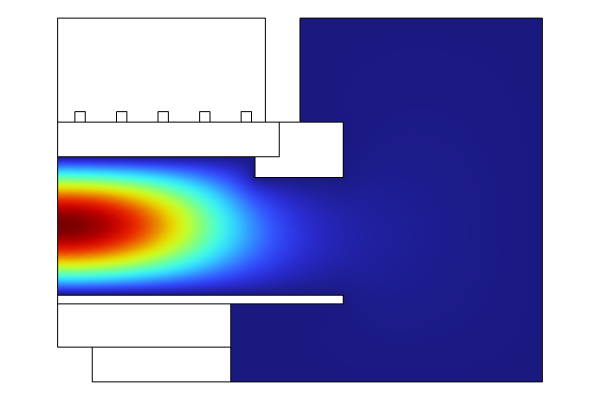
Introduction to Inductively Coupled Plasma and Microwave Plasma Modeling
Learn about modeling inductively coupled plasma and microwave plasma. Part of a course.
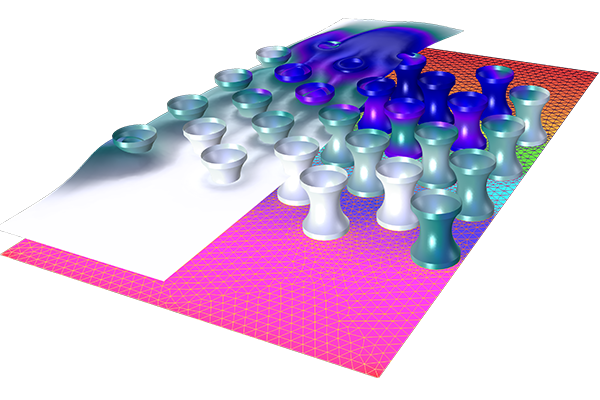
Introduction to Modeling Biosensors
Learn how to model biosensors with COMSOL Multiphysics®and the Chemical Reaction Engineering Module.
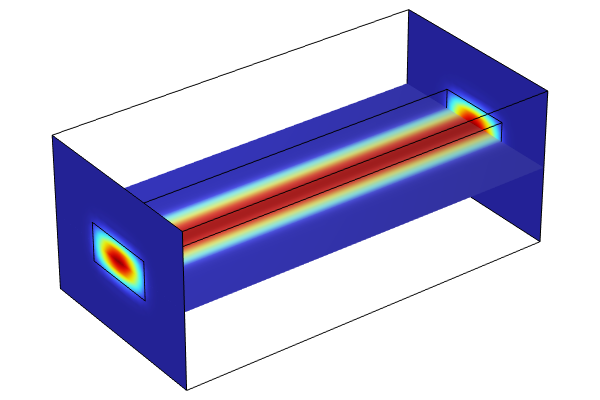
Introduction to Modeling Optical Waveguides
Get an introduction to modeling optical waveguides using COMSOL Multiphysics®and the Wave Optics Module.
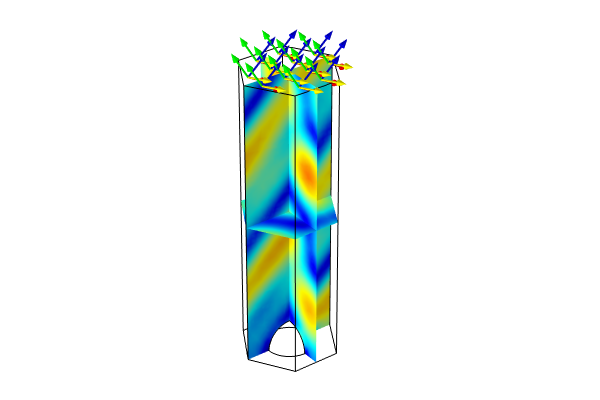
Introduction to Modeling Periodic Structures
Learn about modeling periodic structures using COMSOL Multiphysics®with the RF Module and Wave Optics Module.
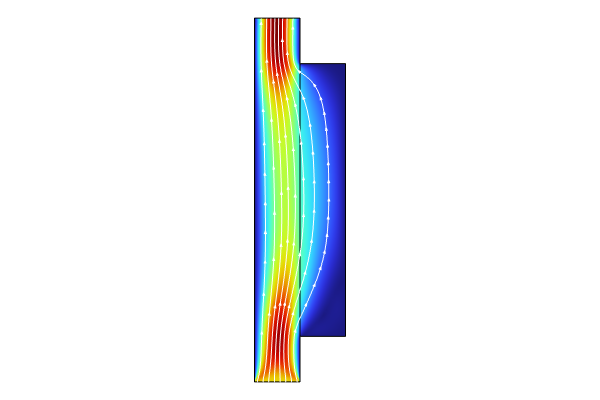
Introduction to Modeling Porous Media Flow
Get an introduction to modeling flow in porous media using COMSOL Multiphysics®and the Porous Media Flow Module.
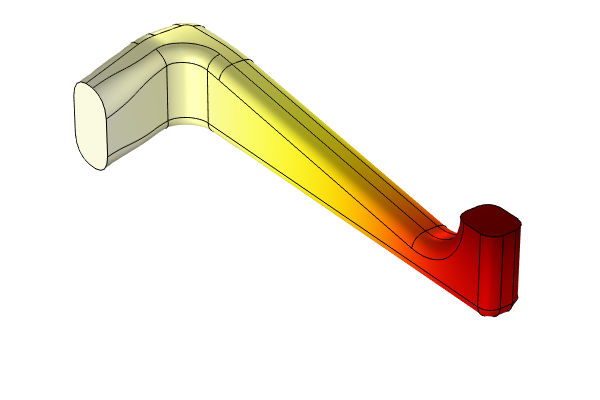
Introduction to Parameter Estimation Studies in COMSOL Multiphysics®
Learn about parameter estimation studies in COMSOL Multiphysics®.
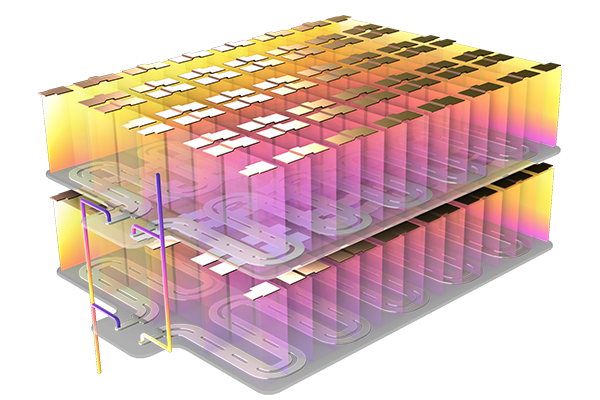
Introduction to the Battery Design Module
Get an introduction to the Battery Design Module in COMSOL Multiphysics®.
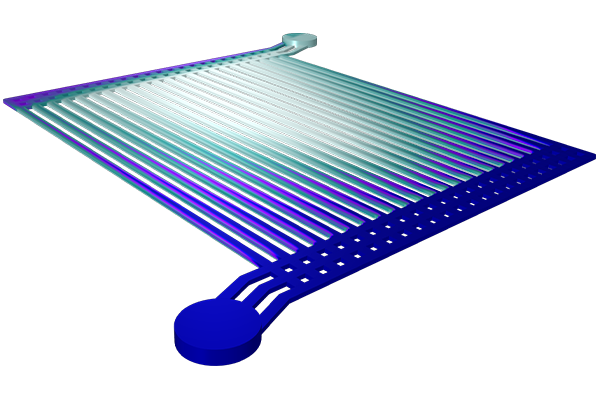
Introduction to the Fuel Cell & Electrolyzer Module
Get an introduction to the Fuel Cell & Electrolyzer Module.

Introduction to the Model Manager
Learn how to manage storing your models and model data using the Model Manager.
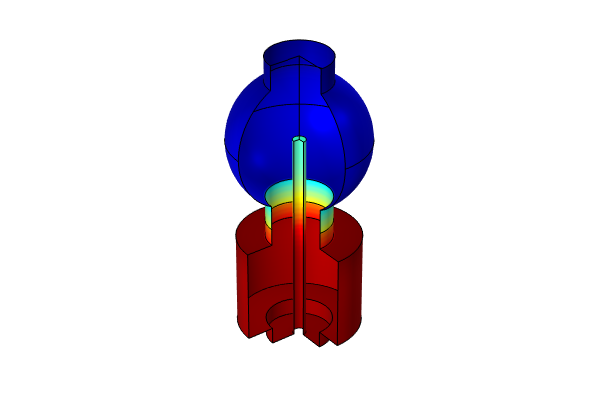
Introduction to Vacuum System Modeling
Get an introduction to modeling vacuum systems with COMSOL Multiphysics®and the Molecular Flow Module.
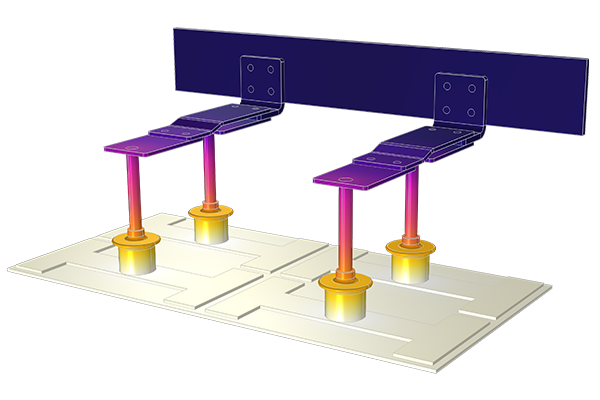
Introduction to LiveLink™forMATLAB®
Get an introduction to LiveLink™forMATLAB®.
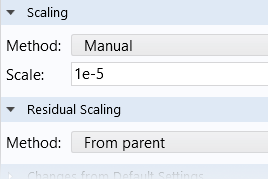
Manually Setting the Scaling of Variables
Learn how to manually set the scaling of variables.
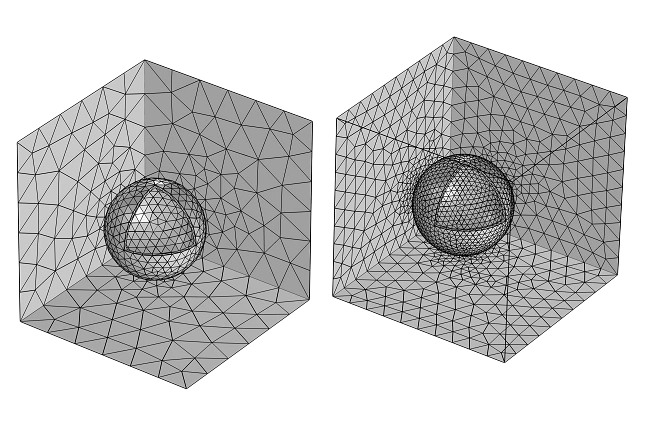
Manually Setting Up the Geometric Multigrid Solver
Learn the steps and use cases for a manual setup of the GMG solver.
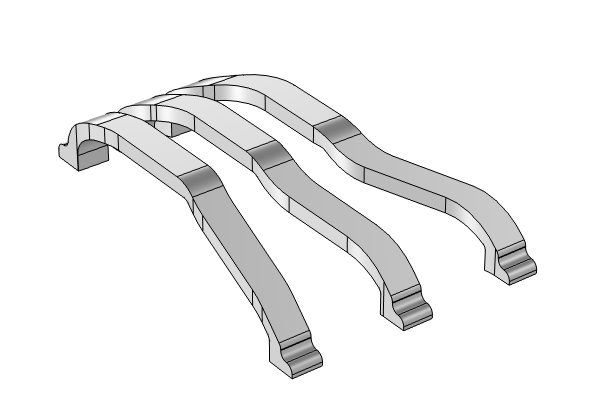
Mesh Refinement, CAD Import, and Simulation Apps
Learn how to verify the model via mesh refinement and package it into an app.
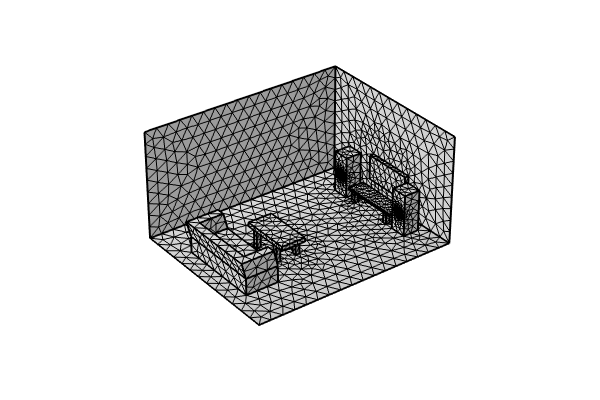
Meshing and Solving Pressure Acoustics Models
Learn about resolving the waves in a pressure acoustics model.
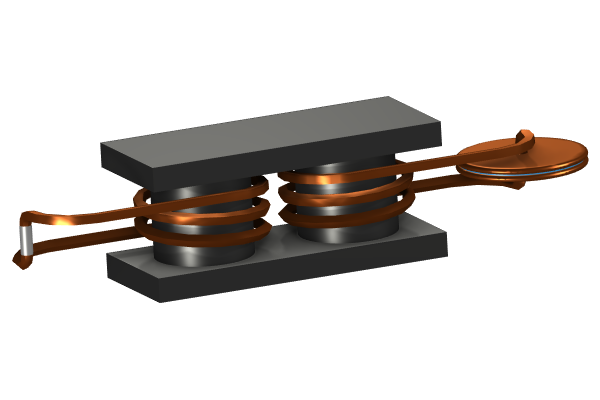
Modeling Capacitive Discharge
Learn how to model the the discharge of the electrical energy within a capacitor.
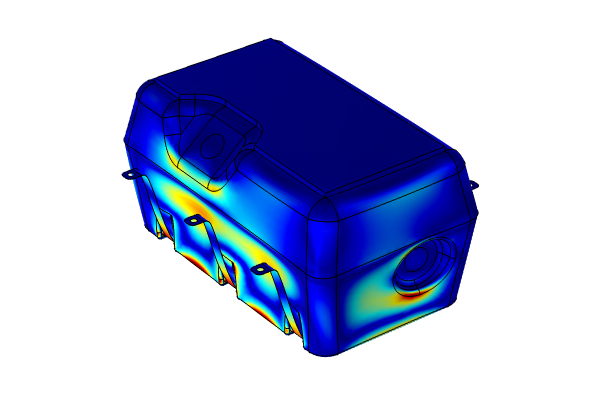
Modeling Overview: Acoustic-Structure Interaction
Learn about using COMSOL Multiphysics®with the Acoustics Module to model acoustics–structure interaction.
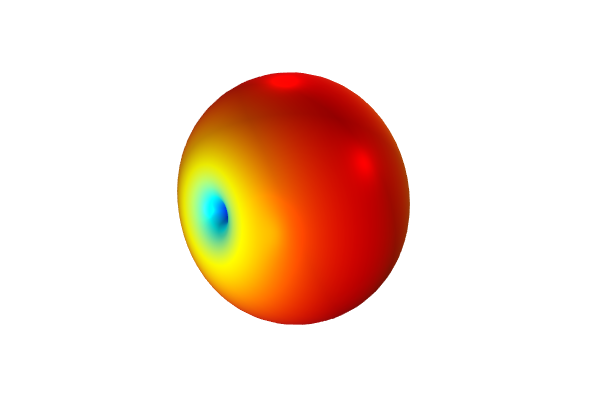
Modeling Overview: Antennas
Get an introduction to antenna modeling using COMSOL Multiphysics®and the RF Module.
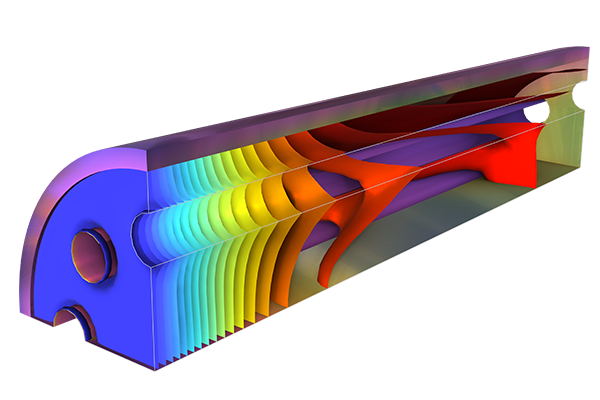
Modeling Overview: Chemical Reaction Engineering
Get an introduction to the Chemical Reaction Engineering Module in COMSOL Multiphysics®.
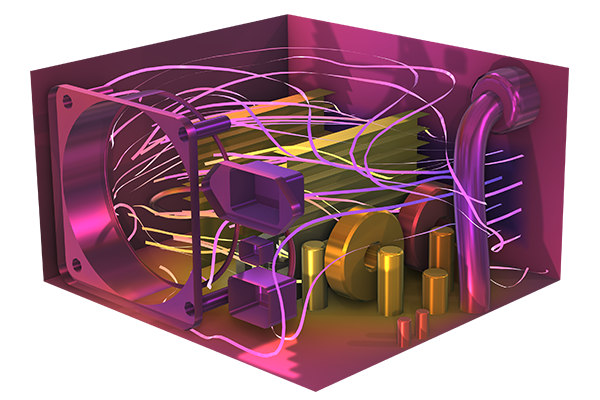
Modeling Overview: Heat Transfer
Get an introduction to simulating heat transfer using COMSOL Multiphysics®with a full demonstration.
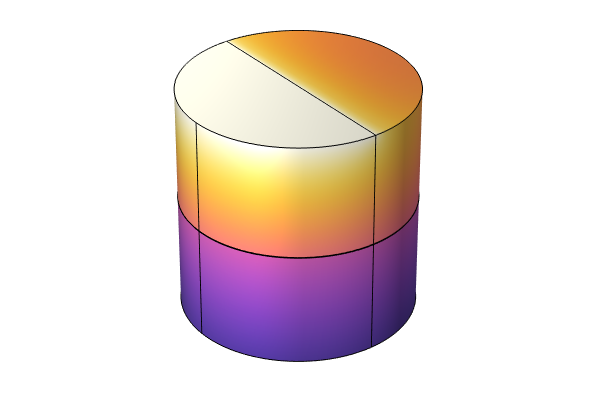
Modeling Overview: Heat Transfer in Thin Layers
Learn about heat transfer in thin layers and see how to use the Heat Transfer Module.
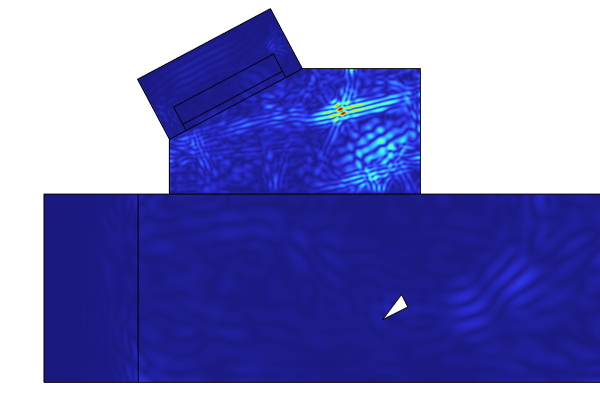
Modeling Overview: Nondestructive Testing Methods
Learn about simulating nondestructive testing methods using COMSOL Multiphysics®and the Acoustics Module.
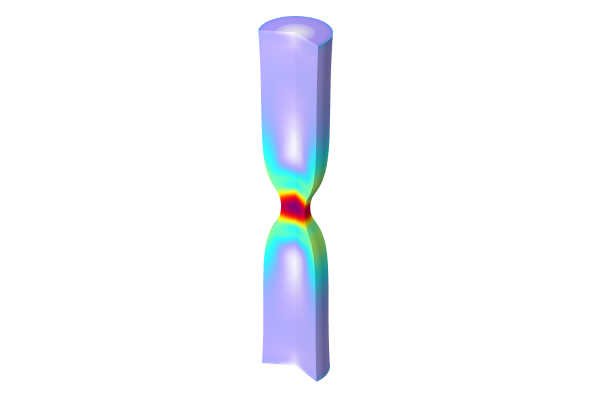
Modeling Overview: Nonlinear Materials
Learn how to model nonlinear materials with the Nonlinear Structural Materials Module and Geomechanics Module.
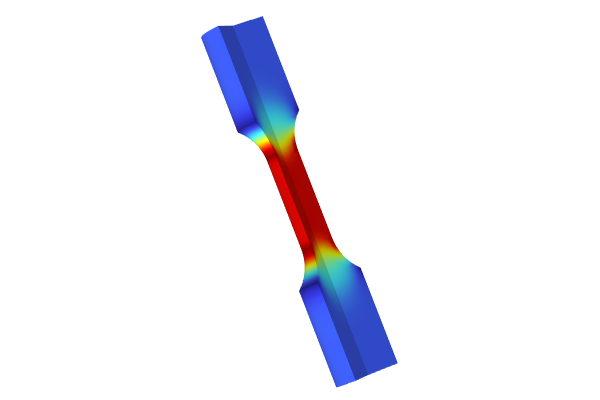
Modeling Overview: Parameter Estimation
Get an introduction to performing parameter estimation with the Optimization Module, an add-on to COMSOL Multiphysics®.
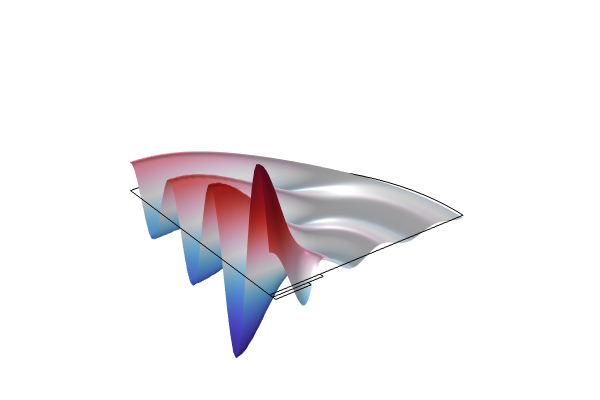
Modeling Overview: Piezoelectric Devices
Learn how to model piezoelectric devices with COMSOL Multiphysics®and the MEMS Module.
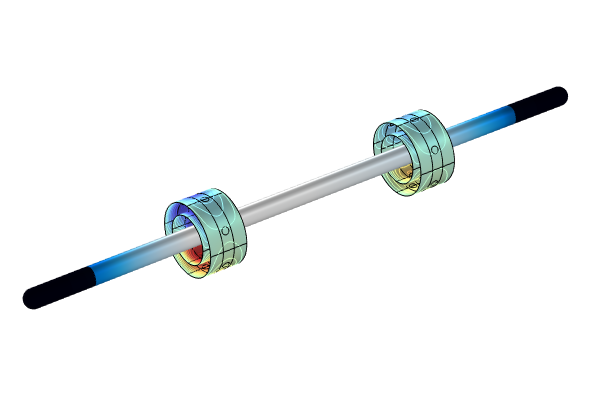
Modeling Overview: Rotordynamics
Get an introduction to modeling rotordynamics with COMSOL Multiphysics®and the Rotordynamics Module.

Modeling Overview: Solvers and Solving Large Models
Learn about the different factors you should consider when solving large models in COMSOL Multiphysics®.
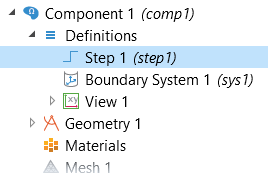
Modeling Step Transitions
Learn about using smoothed step functions for modeling step transitions.
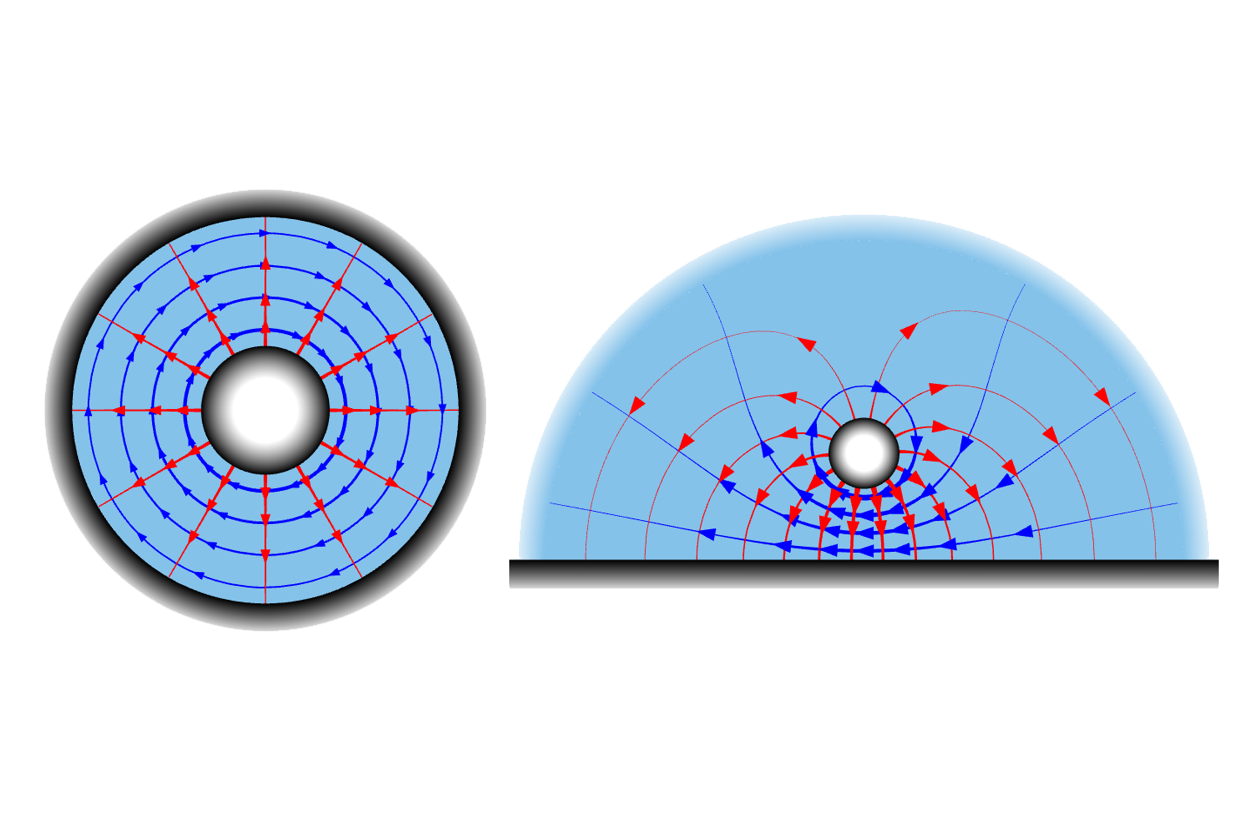
Modeling TEM and Quasi-TEM Transmission Lines
Learn how to model TEM and quasi-TEM transmission lines in COMSOL Multiphysics®.
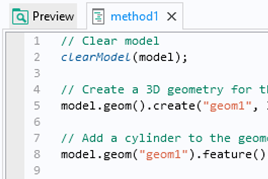
Modeling with ChatGPT®
Use large language models to generate code for performing model operations in COMSOL Multiphysics®.
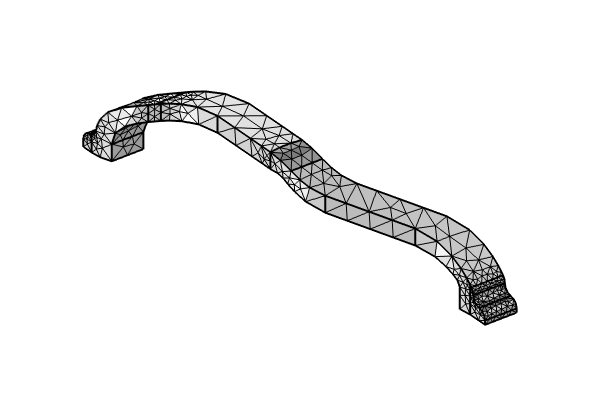
Performing a Mesh Refinement Study and Using Selections and Variables
Learn how to extract data and verify the results of a model via mesh refinement.
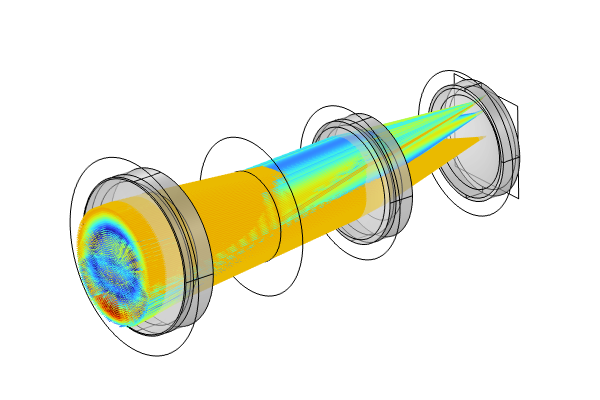
Ray Optics Modeling Capabilities Overview
Learn about the features and functionality in the Ray Optics Module in version 5.6.
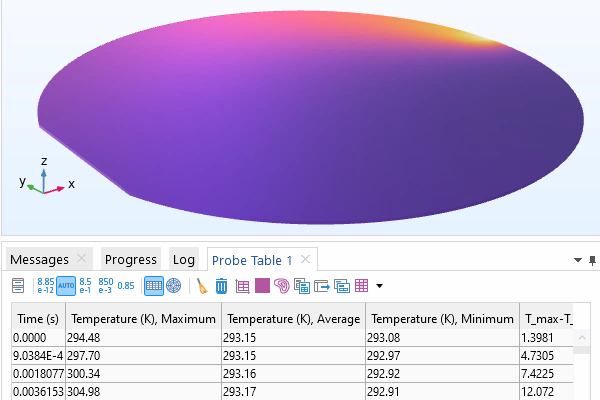
Reducing the Amount of Solution Data Stored in a Model
Learn how to reduce the amount of solution data stored in your COMSOL Multiphysics®model file.
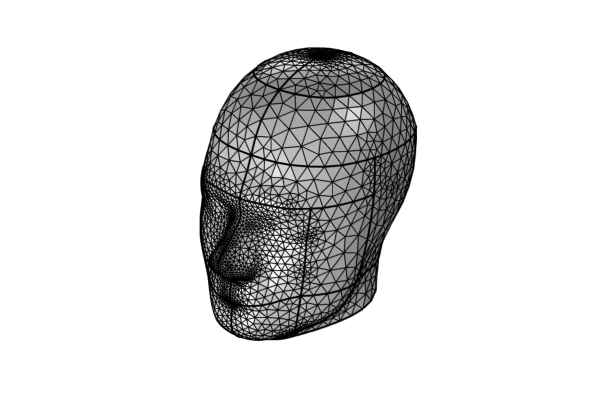
Repairing and Improving Imported Meshes from 3D Scans
Learn how to create, repair, and improve imported meshes from 3D scans for your model.
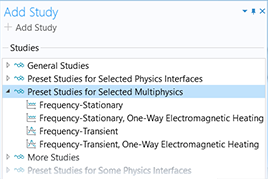
Setting Up and Solving Electromagnetic Heating Problems
Learn how to set up and solve electromagnetic heating problems with high-frequency loads.
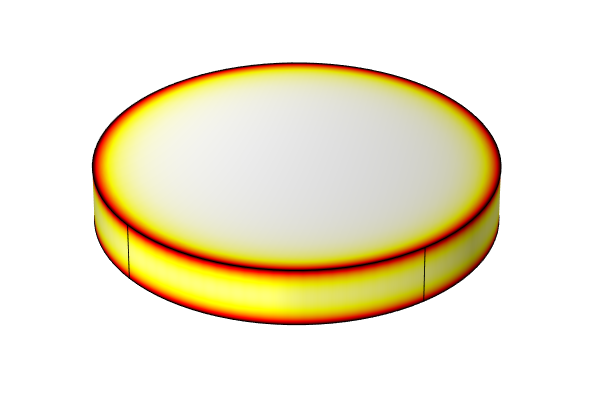
Simulating Radiation in Semitransparent Media
Learn how to simulate radiation in semitransparent media using COMSOL Multiphysics®and the Heat Transfer Module.
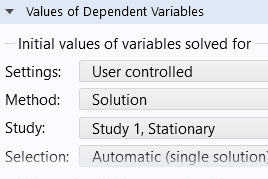
Solving Transient Models That Have Inconsistent Initial Values
Learn how to resolve inconsistent initial values in time-dependent studies in COMSOL Multiphysics®.
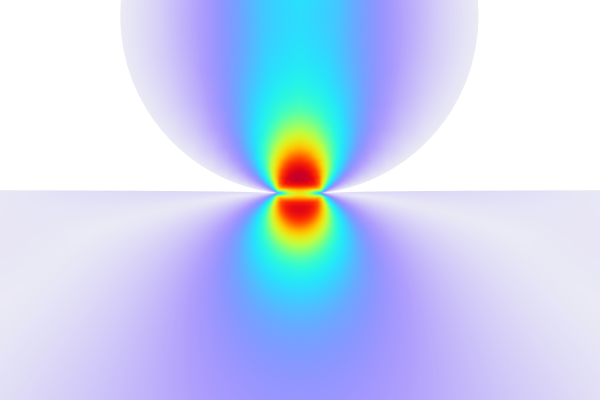
Structural Contact Modeling Guidelines
An in-depth guide to modeling structural contact in the COMSOL®software.
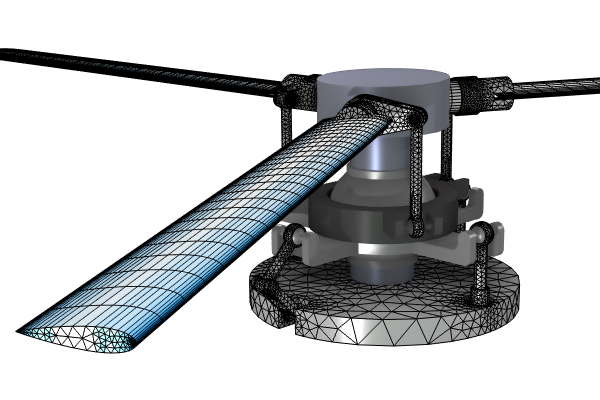
Supported File Formats
See the list of supported file formats for COMSOL Multiphysics®and various add-on products.
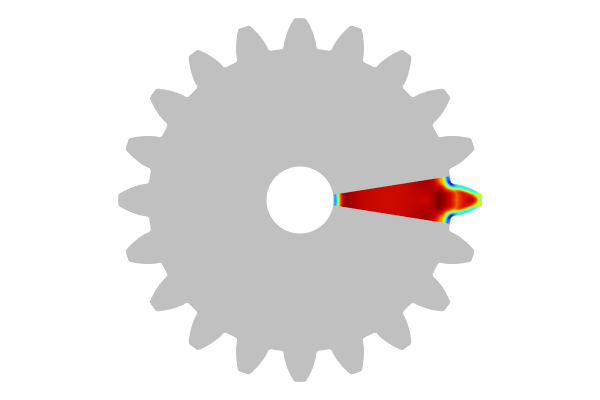
The Basics of Modeling Manufacturing Processes
Learn about modeling manufacturing processes using the COMSOL Multiphysics®software.
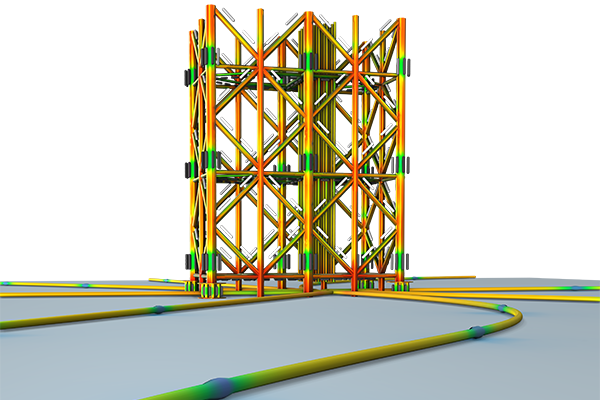
The Basics of the Corrosion Module
Get an introduction to the Corrosion Module in COMSOL Multiphysics®.
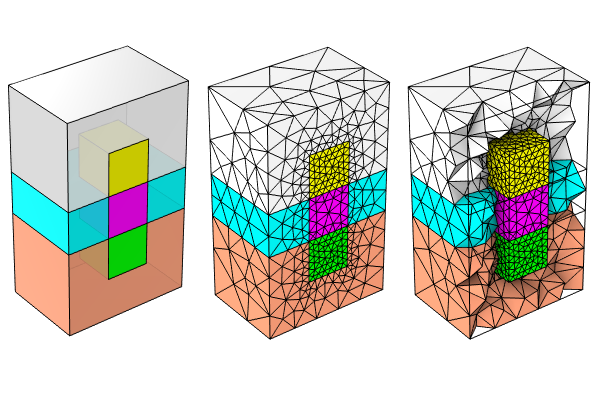
The Usage of Form Union and Form Assembly
Learn about the implications of finalizing a model geometry and learn how to do so.
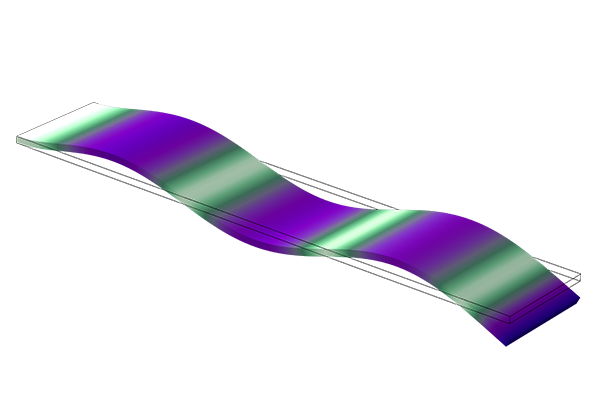
Tracking Eigenmodes in Parameter Sweeps
Learn how to categorize eigenmodes using the mode overlap integral in COMSOL Multiphysics®.
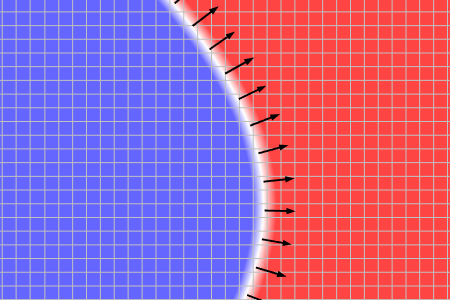
Two-Phase Flow Modeling Guidelines
Learn how to model two-phase flow using the level set and phase field approaches.
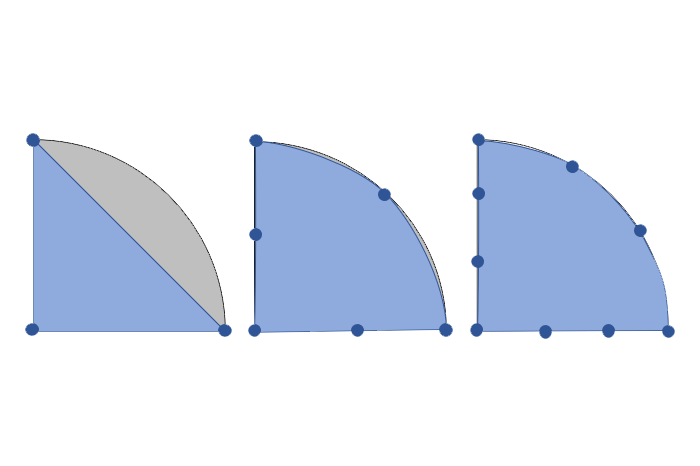
Understanding and Changing the Element Order
Learn how to understand and change the element order of your multiphysics models.
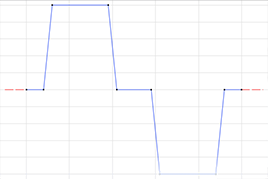
Understanding Periodic Signals and Their Frequency Content
Get an introduction to periodic signals and learn how to compute their frequency content.
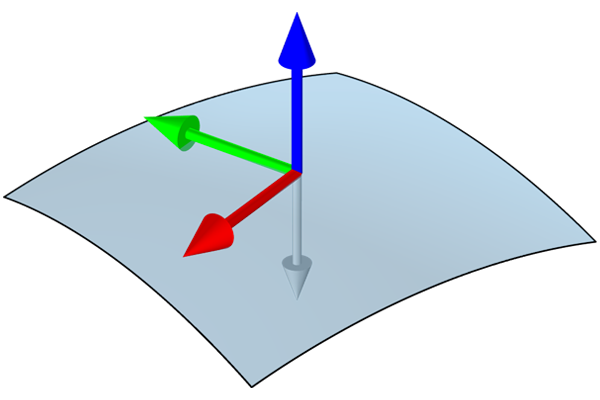
Understanding the Magnetic Insulation Boundary Condition
In this article, we go over the uses of the *Magnetic Insulation* boundary condition in COMSOL Multiphysics®.
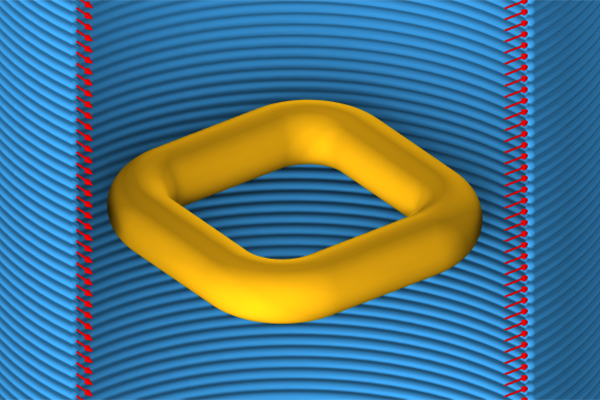
Understanding the Options for Meshing and Geometric Modeling of Conductors in Electromagnetic Fields
Learn about the meshing and geometric modeling of conductors in electromagnetic fields.
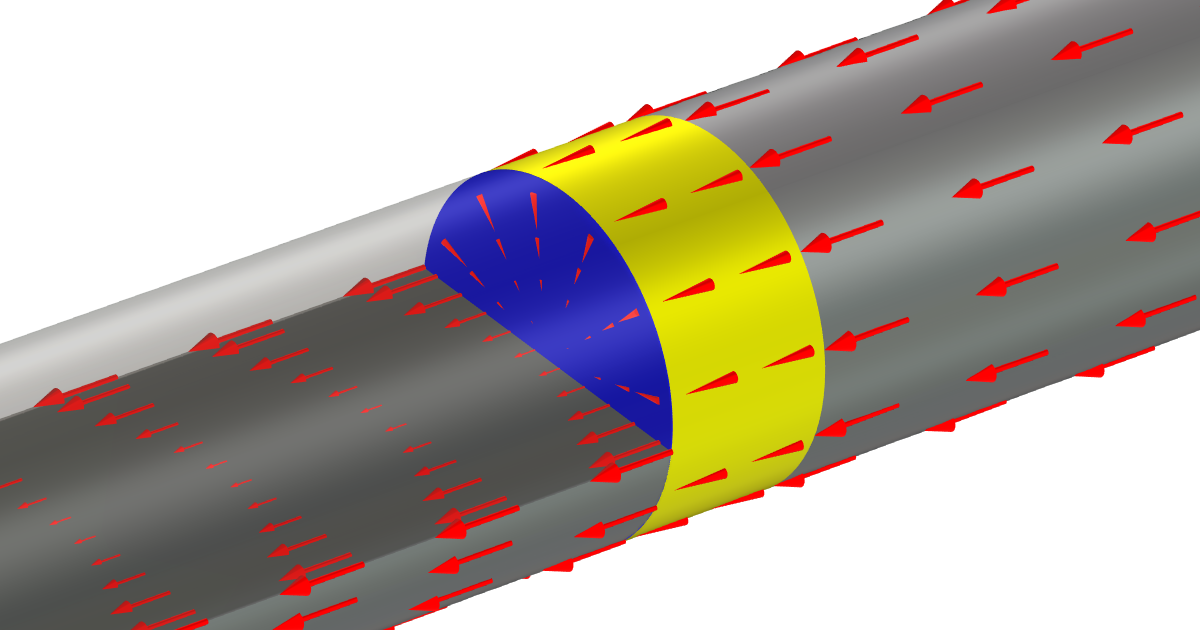
Using Lumped Ports and Lumped Elements in Electromagnetic Field Modeling
Learn about using lumped ports when modeling electromagnetic fields with COMSOL Multiphysics®.
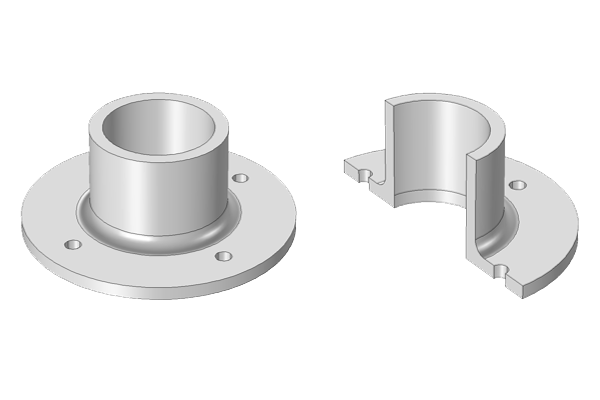
Using Symmetry to Reduce Model Size
Read this article to learn about the advantages of using symmetry to reduce the size of your models.
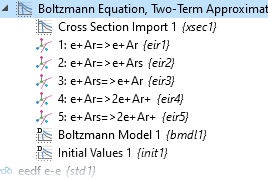
Using the EEDF and Boltzmann Equation, Two-Term Approximation
Learn about the electron energy distribution function and more in this video on plasma modeling.
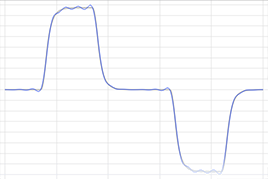
Using the Inverse Fast Fourier Transform to Reconstruct a Transient Signal
Learn how to use the inverse fast Fourier transform (IFFT) functionality in COMSOL Multiphysics®.
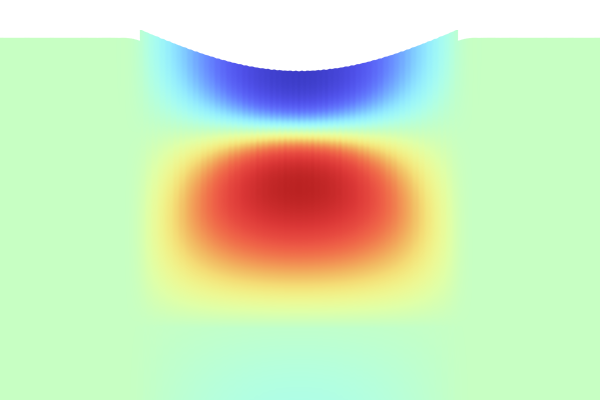
Using Uncertainty Quantification to Model Frequency Variation in a MEMS Resonator
Learn about using uncertainty quantification to model frequency variation in a MEMS resonator.
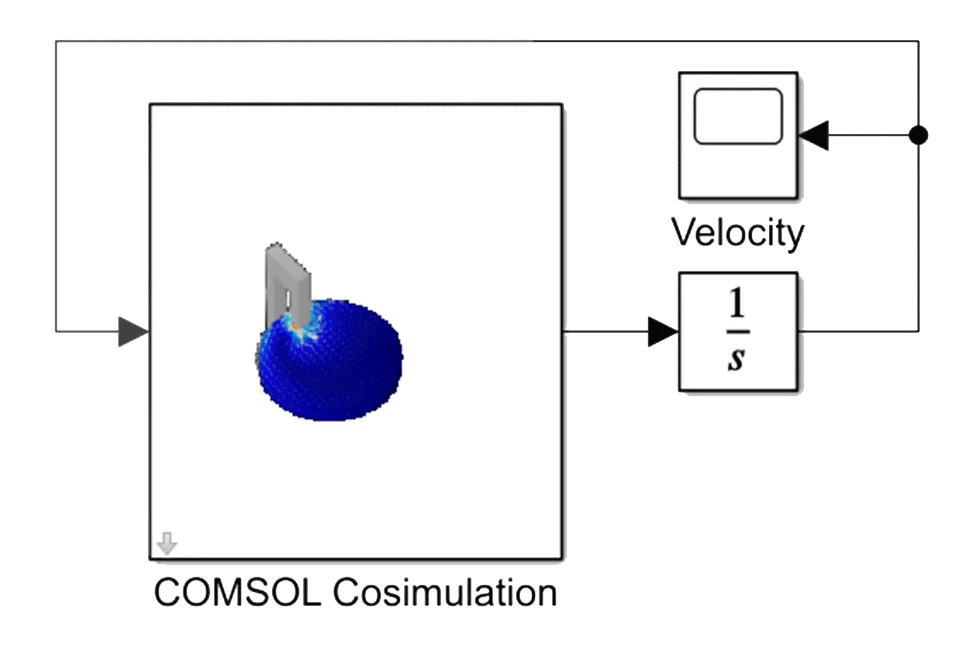
Using LiveLink™forSimulink®
Learn about the modeling capabilities that become available when you connect COMSOL Multiphysics®to Simulink®using LiveLink™forSimulink®.
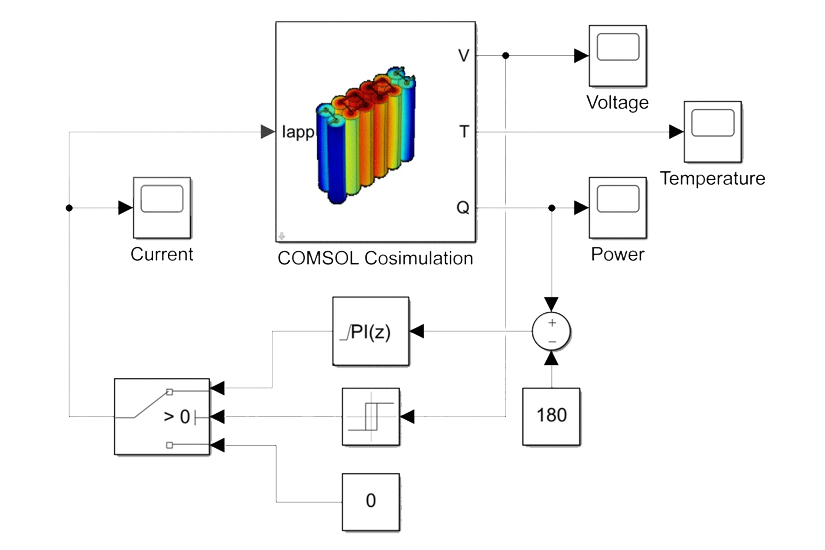
Using LiveLink™forSimulink®: for Lumped Battery Modeling
Watch a demonstration of creating a lumped battery model using COMSOL Multiphysics®with LiveLink™forSimulink®.
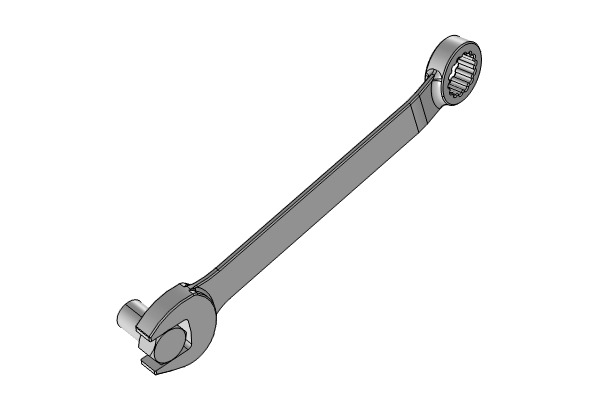
Using LiveLink™forSOLIDWORKS®to Create Geometry in COMSOL Multiphysics®
Learn how to synchronize and import a SOLIDWORKS®CAD geometry into COMSOL Multiphysics®.
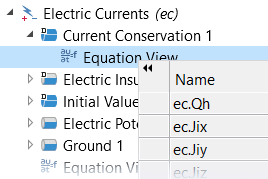
Viewing and Accessing the Equations and Variables for Physics Feature Nodes
Learn how to see the equations and variables for a physics node.
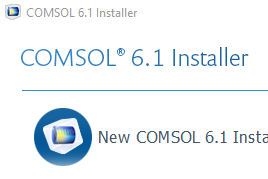
COMSOL®Installation Companion
Get a comprehensive list of resources on installing COMSOL®.
仿真流程
- 几何
- 构建几何
- 累积选择
- 虚拟几何操作
- 材料
- 网格
- 建模工具 & 定义
- 坐标系
- 函数 & 运算符
- 动网格 & 变形几何
- 参数 & 变量
- 探针 & 非局部耦合
- 选择
- 物理场接口
- 域 & 边界设置
- 方程视图
- 多物理场耦合
- 结果 & 可视化
- 数据、图像 & 动画导出
- 派生值 & 计算组
- 绘图 & 动画
- 报告 & 演示文稿
- 研究 & 求解器
电磁
- 低频电磁
- 电容元件 & 静电
- 电磁热
- 电磁材料模型
- 电感元件 & 耦合场
- 电阻元件 & 电流
- 等离子体物理
- 电容耦合等离子体
- 电击穿
- 电子能分布函数 (EEDF)
- 电感耦合等离子体
- 非平衡等离子体
- 射线光学
- 激光腔的稳定性分析
- 透镜、相机 & 望远镜
- 棱镜 & 涂层
- 太阳辐射
- 光谱仪 & 单色器
- 结构-热-光学性能 (STOP) 分析
- RF & 微波工程
- 天线
- 滤波器
- 传输线 & 波导
- 半导体器件
- 器件构建块
- 光子器件 & 传感器
- 量子系统
- 晶体管
- 波动光学
- 光栅 & 超材料
- 波导 & 耦合器
结构 & 声学
- 声学 & 振动
- 汽车声学
- 建筑 & 室内声学
- 弹性波
- 电声换能器
- 压电换能器
- 压力声学
- 热黏性声学
- 超声波
- 振动声学 & 流-固耦合
- 材料模型
- 蠕变
- 超弹性
- 塑性
- 黏弹性
- 黏塑性
- MEMS & 压电器件
- 静电驱动
- 压电
- 传感器
- 结构动力学
- 转子动力学
- 结构力学
- 复合材料 & 多层壳
- 接触 & 摩擦
- 固体力学
- 热膨胀 & 热应力
流体 & 传热
- 计算流体力学 (CFD)
- 多相流 & 相变
- 单相层流
- 单相湍流
- 传热
- 共轭传热
- 强制 & 自然对流
- 热传导
- 金属加工
- 电力电子 & 热管理
- 热辐射
- 薄结构
- 分子流
- 流体流动颗粒跟踪
- 多孔介质流动
- 自由 & 多孔介质流动
- 传热 & 多孔介质流动
- 溶质运移
- 地下水流
化工
- 电池
- 液流电池
- 一般电池设计
- 锂离子电池
- 热管理
- 化学反应工程
- 动电效应
- 理想釜式反应器
- 混合 & 分离
- 反应工程
- 热力学
- 腐蚀与防护
- 燃料电池 & 电解槽
- 电解槽
- 燃料电池
接口
- CAD 导入 & CAD LiveLink™
- LiveLink™forExcel®
- LiveLink™forMATLAB®
- LiveLink™forSimulink®
通用
- API
- 集群 & 云计算
- 基于方程建模
- 方程视图
- 数学接口
- 安装 & 许可证管理
- Linux
- Mac
- Windows
- 模型管理器
- 优化
- 参数估计
- 参数优化
- 形状优化
- 拓扑优化
- 仿真 App
- App 开发器
- COMSOL Compiler™
- 不确定性量化
- 用户界面
